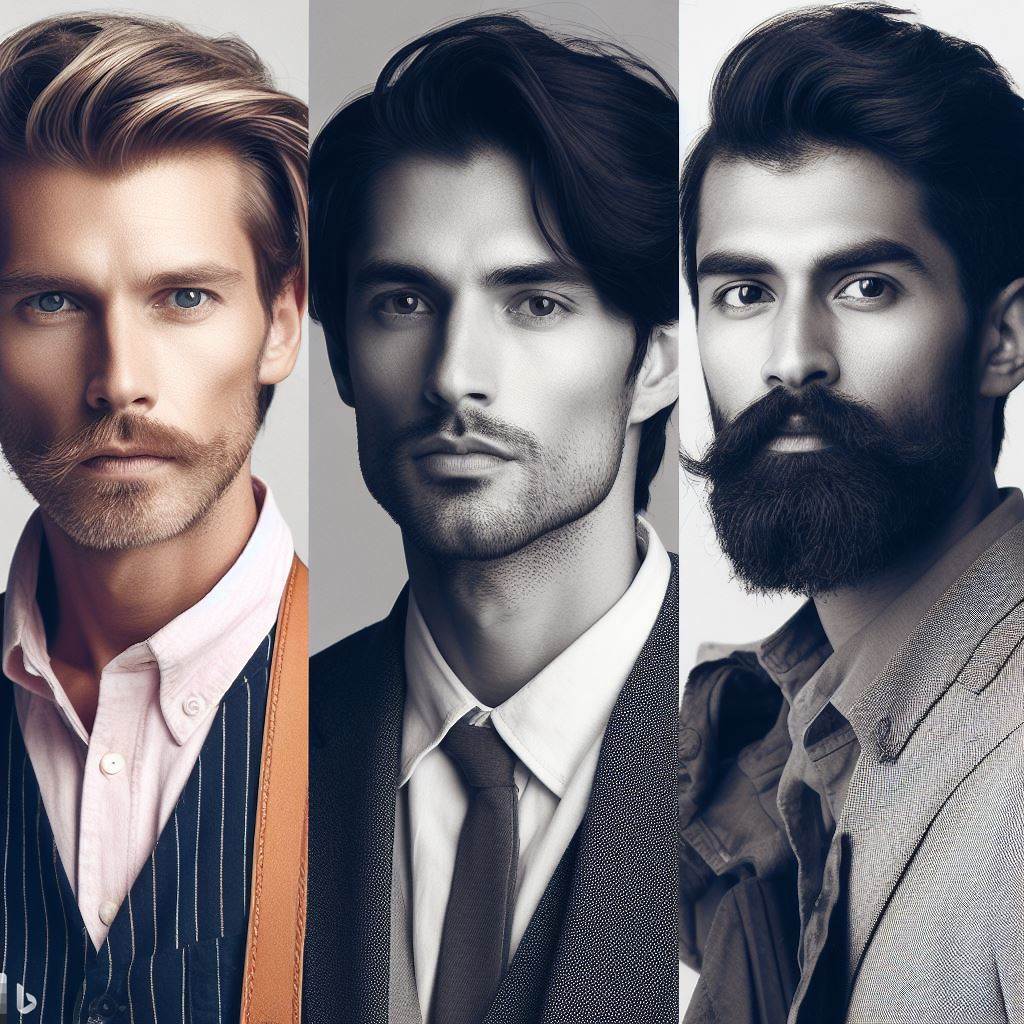Introduction
Diversity in the workplace refers to the inclusion of people from different backgrounds, cultures, and perspectives.
It plays a crucial role in promoting innovation, creativity, and overall success in various industries.
Transitioning to the US animation industry, diversity becomes an essential factor for creating inclusive content that resonates with a diverse audience.
Importance of diversity in various industries
Diversity fosters a rich tapestry of ideas, experiences, and talents, leading to more comprehensive problem-solving and decision-making processes.
In industries like tech, finance, and healthcare, diversity brings fresh perspectives, ensuring better products and services.
Moreover, it contributes to a more equitable society, providing opportunities for underrepresented groups.
Transition to the US animation industry
In the US animation industry, diversity is a pressing issue that requires attention. Historically, animation has been dominated by a particular demographic, resulting in limited representation and stereotyping.
However, in recent years, there has been a growing awareness of the need for diverse voices and stories in animation.
This change is driven by the recognition that diverse audiences deserve to see themselves reflected on screen.
By embracing diversity, the animation industry can create more authentic narratives and establish a stronger connection with viewers.
It also allows for the showcasing of lesser-known cultures and experiences, fostering empathy and understanding among audiences.
Basically diversity is not only essential but also necessary for the US animation industry. Embracing diversity leads to more inclusive and representative content, which resonates with a broader audience.
It is crucial to continue advocating for diverse voices and stories, ensuring equal opportunities for all individuals in the animation industry.
Historical Background
Lack of diversity in early US animation
When looking back at the historical background of diversity in the US animation industry, it becomes evident that there was a significant lack of representation in the early days.
The industry was dominated by white male artists and creators, resulting in a lack of diverse voices and perspectives.
During this time, characters were often depicted with stereotypical traits that perpetuated negative and harmful stereotypes.
Dominance of white male artists and creators
However, as time went on, the industry started to recognize the importance of diversity and the need for change.
One key milestone in terms of diversity was the introduction of African American animator Floyd Norman into the industry.
Norman, who began working at Disney in the 1950s, broke barriers and paved the way for other minorities to enter the field.
His talent and contributions demonstrated that diverse voices and perspectives could enhance the storytelling process and enrich the industry as a whole.
Key milestones or breakthroughs in terms of diversity
Another breakthrough came in the 1990s with the success of the animated series “The Simpsons.”
Created by Matt Groening, the show tackled social issues and featured characters from different backgrounds, challenging the status quo of animation industry.
This groundbreaking series showed that diverse characters and storylines could resonate with audiences and be commercially successful.
In recent years, there has been a growing recognition of the importance of diversity not only in front of the camera but also behind the scenes.
Animated films and shows now strive to include voices from various ethnicities, genders, and sexual orientations to provide a more inclusive and accurate portrayal of society.
Production companies are actively seeking and supporting diverse talent, encouraging them to share their stories and perspectives.
The growth of streaming platforms has also played a significant role in expanding opportunities for diverse animators and creators.
Transform Your Career Today
Unlock a personalized career strategy that drives real results. Get tailored advice and a roadmap designed just for you.
Start NowPlatforms like Netflix and Hulu have embraced diversity, commissioning shows that tell unique and underrepresented stories.
As a result, we are now witnessing a greater variety of animated content that reflects the diverse audience and society that it serves.
While the US animation industry still has a long way to go in terms of achieving full diversity and representation, significant progress has been made.
Raising awareness, promoting inclusivity, and breaking down the barriers that have limited diverse voices are critical steps towards a more inclusive industry.
By celebrating the milestones and accomplishments in terms of diversity, we can continue to strive for a future where everyone’s stories are heard and represented in animation.
Current State of Diversity in US Animation
Statistics on representation in the industry
The state of diversity in the US animation industry is far from ideal. Statistics clearly indicate a severe underrepresentation of certain groups within animated media.
Women, for instance, are vastly outnumbered when it comes to occupying lead roles in animated films. This lack of female protagonists restricts the portrayal of diverse narratives and perpetuates gender imbalance.
Furthermore, people of color also face limited opportunities, with only a small fraction of characters being non-white.
Underrepresentation of certain groups (e.g., women, people of color, LGBTQ+)
One of the most concerning aspects of the industry’s lack of diversity is the representation of LGBTQ+ characters and narratives, which remain scarce.
Animated media often avoids or censors these identities, which inhibits the potential for positive and inclusive storytelling within the industry.
By sidelining these communities, the animation industry misses out on opportunities to connect with a diverse audience and represent the world we live in.
- Women have been historically marginalized in the animation industry, occupying only a small percentage of key positions.
- People of color face limited opportunities, often being typecast with stereotypical roles or denied access to decision-making positions.
- LGBTQ+ characters and narratives are often censored or avoided due to societal pressure and fear of controversy.
Highlighting any ongoing efforts or initiatives to promote diversity
- Various organizations, such as Women in Animation and Cartoon Network Studios, are actively promoting gender equality and increasing opportunities for women.
- The Animation Guild has established initiatives to encourage diversity by organizing mentorship programs and advocating for inclusive hiring practices.
- Representation Matters, an industry-driven initiative, strives to increase diversity by supporting and funding projects from marginalized creators.
Fostering Diversity and Inclusivity in Animation
Nevertheless, there are ongoing efforts and initiatives aimed at promoting diversity within the US animation industry.
Organizations like Women in Animation and Cartoon Network Studios actively strive to increase the representation of women in key positions within the industry.
These initiatives not only provide mentorship and networking opportunities but also challenge traditional gender roles and stereotypes through storytelling.
The Animation Guild, a renowned union for animation professionals, has also taken steps to address diversity.
They have implemented mentorship programs where experienced professionals assist aspiring artists from underrepresented communities, breaking down barriers and providing valuable guidance.
Additionally, the Animation Guild advocates for inclusive hiring practices, ensuring that talent from all backgrounds has equal access to opportunities.
Another notable initiative is Representation Matters, a collective effort by industry professionals to amplify marginalized voices.
initiative aims to support and fund projects from creators who belong to underrepresented groups.
By actively investing in diverse storytelling, Representation Matters encourages a shift towards inclusive narratives that reflect the beautiful diversity of our society.
In fact while the current state of diversity in the US animation industry leaves much to be desired, there are positive steps being taken to address this issue.
By acknowledging the underrepresentation of certain groups and supporting initiatives aimed at promoting diversity, we can work towards a more inclusive and representative industry.
It is crucial to continue challenging biases, breaking down barriers, and embracing the power of animated storytelling to create a world where everyone sees themselves reflected onscreen.
Read: Freelancing vs. Studio Jobs: What‘s Best for US Animators?
Impact of Diversity
Impact of Diversity in the US Animation Industry
Diversity in the animation industry brings numerous benefits and advantages. Firstly, it allows for a wider range of perspectives and experiences to be represented.
By including diverse voices and stories, the industry becomes more inclusive and reflective of society.
People from different backgrounds can find characters and narratives they can relate to, promoting inclusivity.
Diverse storytelling opens up opportunities to explore unique and untold stories. Characters and narratives from different cultures and perspectives can educate and entertain audiences.
This allows for a more comprehensive understanding of various communities and their experiences.
Furthermore, diverse storytelling helps break stereotypes and challenges societal biases. When diverse stories are told, stereotypes can be dismantled, and new narratives can emerge.
By showcasing diverse characters, the industry can inspire and empower marginalized groups.
Diversity has a positive impact on creativity and innovation within the animation industry
- When people from various backgrounds collaborate, new ideas and perspectives are introduced.
- This leads to a broader range of creative solutions and innovations.
- Different cultural influences can spark unique artistic approaches and styles, making animation more diverse.
- By embracing diversity, the industry fosters a culture of creativity and encourages fresh approaches.
- When a diverse team works together, they bring together their varied skills and expertise.
- This results in richer and more engaging storytelling, appealing to a wider audience.
Diversity in the animation industry creates an environment that values inclusivity and representation.
- It provides opportunities for underrepresented groups to break into the industry and showcase their talents.
- By having a diverse workforce, the animation industry can better understand its audience.
- Stories that accurately reflect the experiences of different communities can resonate with viewers on a deeper level.
- Moreover, diversity in the industry helps to avoid cultural appropriation and misrepresentation.
- When stories are told by people from within the culture or community being portrayed, authenticity is ensured.
- By embracing diversity, the animation industry can contribute to a more inclusive society as a whole.
- Viewers, especially young ones, can learn about and appreciate different cultures and perspectives.
- The industry plays a role in shaping attitudes, fostering empathy, and promoting social change.
- Ultimately, diversity not only benefits the animation industry but also society as a whole.
From representing a wider range of perspectives and experiences to inspiring creativity and innovation,
diverse storytelling and voices contribute to a more inclusive industry with authentic and impactful narratives.
Read: Impact of Technology: Future Trends in US Animation

Find Out More: Sustainable Practices in Landscape Architecture
Challenges and Barriers
As we delve deeper into the topic of diversity in the US animation industry, it becomes crucial to identify the challenges faced by underrepresented groups when it comes to entering and succeeding in this industry.
Additionally, we must discuss systemic issues like biases and discrimination, and highlight the pressing need for more inclusive hiring practices and supportive environments.
Showcase Your Business Today
Reach thousands of readers actively exploring professional services. Publish your business profile and grow your audience now.
Publish NowChallenges Faced by Underrepresented Groups
- Limited opportunities for underrepresented groups to break into the animation industry.
- Lack of diverse role models leading to limited visibility and inspiration for aspiring animators.
- Unequal access to education and resources, preventing diverse talents from honing their skills.
- Stereotyping and pigeonholing, whereby underrepresented individuals face limited chances to showcase their creativity.
- Language and cultural barriers that hinder diverse artists from fully expressing their ideas.
Systemic Issues: Biases and Discrimination
The US animation industry, like many other sectors, grapples with systemic issues that perpetuate biases and discrimination.
- Unconscious biases often result in underrepresented groups being overlooked or undervalued in hiring decisions.
- Discrimination based on factors such as race, ethnicity, gender, and sexual orientation persists.
- Microaggressions and lack of representation in storytelling perpetuate harmful stereotypes.
- Power imbalances exist within the industry, limiting the voices and perspectives of marginalized groups.
- Old-fashioned industry practices and resistance to change hinder progress towards a more inclusive environment.
Need for More Inclusive Hiring Practices and Supportive Environments
Addressing the challenges and systemic issues is imperative, and it starts with implementing inclusive hiring practices and fostering supportive environments within the animation industry.
- Creating targeted internship and mentorship programs to provide underrepresented individuals with more opportunities.
- Establishing partnerships between animation studios and educational institutions to promote access and diversity in training.
- Expanding recruitment efforts to reach a wider pool of talents, actively seeking out diverse candidates.
- Promoting fair and transparent evaluation processes that prevent biases from influencing hiring decisions.
- Investing in diversity and inclusion training for industry professionals to raise awareness and mitigate biases.
- Increasing representation of underrepresented groups in decision-making positions within animation studios.
- Encouraging diverse storytelling and supporting projects that challenge stereotypes and amplify marginalized voices.
- Building communities and networks that provide mentorship, support, and resources for underrepresented individuals.
In addition he challenges faced by underrepresented groups in the US animation industry are multifaceted, ranging from limited opportunities and stereotypes to biases and discrimination.
However, by addressing these systemic issues and implementing inclusive hiring practices, we can create a more diverse and supportive industry that harnesses the full potential of all talented individuals.
It is crucial for animation studios, educational institutions, and industry professionals to work together to break down barriers and foster an environment where everyone can thrive.
Read: Career Growth: From Junior Animator to Director in the US
Explore Further: Importance of User Experience in Product Design
Steps Towards Greater Diversity
Initiatives and Organizations Promoting Diversity in the Animation Industry
- Women in Animation: This organization advocates for gender equality and creates platforms for women in the industry.
- Black Women Animate: A platform that focuses on empowering black women animation professionals and promoting inclusivity.
- Asian Animation Summit: A conference that brings Asian creators together, fostering collaboration and diversity.
- LatinX in Animation: This group aims to support and uplift Latinx talent by providing resources and networking opportunities.
- Native American Animation: An initiative that highlights and supports indigenous animators in the industry.
Success Stories and Positive Impact of Diversity Efforts
- “Coco”: The animated film about Mexican culture and traditions received critical acclaim and won the Academy Award for Best Animated Feature.
- “Steven Universe”: This animated TV series includes diverse characters of various genders, ethnicities, and sexual orientations, promoting inclusivity.
- “Princess and the Frog”: Disney’s first animated feature film with an African-American princess, breaking stereotypes and inspiring young viewers.
- “Avatar: The Last Airbender”: An animated series that respectfully represents Asian cultures and their rich diversity.
- “She-Ra and the Princesses of Power”: The show features strong female characters and includes LGBTQ+ representation, fostering inclusion.
Resources for Aspiring Diverse Animators and Skill Development Opportunities
- Animation Mentor: A renowned online school offering animation courses and mentorship for aspiring artists.
- Pixar’s RenderMan Art Challenges: Contests organized by Pixar Animation Studios to showcase diverse talent and nurture skills.
- Animation Festivals: Events like Annecy International Animated Film Festival provide platforms for networking, learning, and exposure.
- Online Communities: Platforms like Polycount, CGSociety, and ArtStation offer spaces for diverse animators to showcase their work and connect with professionals.
- Mentorship Programs: Initiatives like Women in Animation’s Mentorship Program provide opportunities for diverse animators to learn from experienced industry professionals.
By promoting diversity, the US animation industry has seen a positive transformation, with more representation and inclusivity.
These initiatives, success stories, and valuable resources are crucial in breaking barriers and creating equal opportunities for aspiring diverse animators.
As the industry progresses, it is essential to continue supporting and amplifying diverse voices, ensuring a more vibrant and inclusive future for animation.
Read: Top US Animated Productions and Their Global Influence
Discover More: How to Build a Strong Portfolio in Web Design
Conclusion
Diversity in the US animation industry is crucial for its growth and development.
The representation of different cultures, ethnicities, and perspectives in animated content allows for richer storytelling and a more inclusive industry.
It is important for us as consumers and supporters of the animation industry to actively seek out and support diverse animation projects and artists.
By uplifting and promoting the work of underrepresented individuals, we can contribute to a more diverse and inclusive industry landscape.
Furthermore, we should not stop at just supporting diverse animation, but also advocate for greater diversity and inclusion in the industry as a whole.
This can be done by amplifying the voices of marginalized artists, encouraging studios to prioritize diversity in their hiring practices, and calling out instances of exclusion or discrimination.
As viewers and fans, we have the power to make a difference. Let’s use our voices and platforms to demand and celebrate diversity in the US animation industry.
By doing so, we can ensure that future generations of animators and audiences have access to a range of stories and perspectives that reflect the true diversity of our society.
Together, let’s take action and make the US animation industry a more inclusive and diverse space for all.
[E-Books for Sale]
The Big Book of 500 High-Paying Jobs in America: Unlock Your Earning Potential
$19.99 • 500 High-Paying Jobs • 330 pages
Explore 500 high-paying jobs in America and learn how to boost your career, earn more, and achieve success!
See All 500 High-Paying Jobs of this E-Book
1001 Professions Without a Degree: High-Paying American Jobs You Can Start Now
$19.99 • 1001 Professions Without a Degree • 174 pages
Discover 1001 high-paying jobs without a degree! Unlock career tips, skills, and success strategies for just $19.99!




